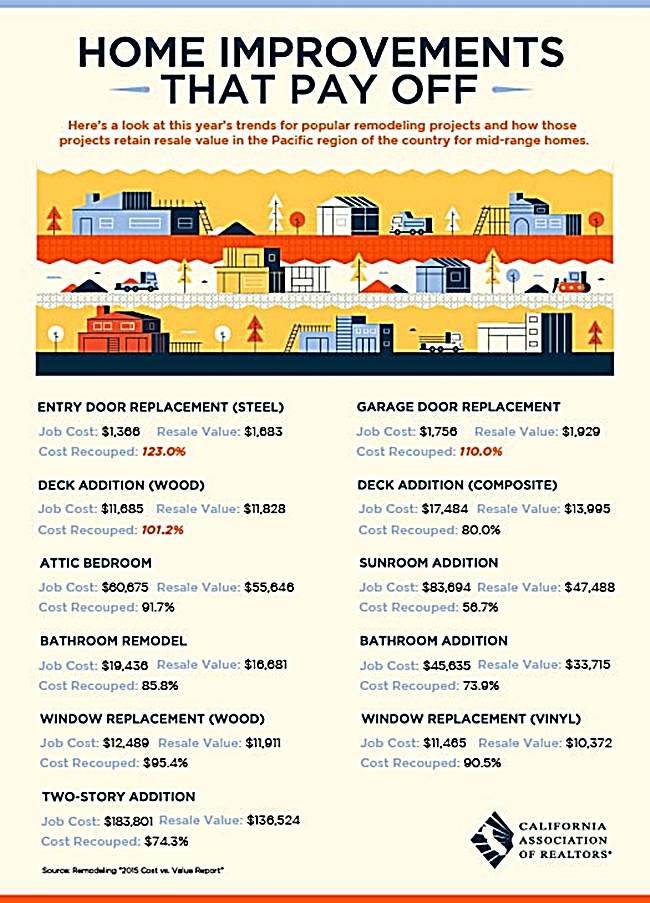Home inspectors have the expertise and knowledge of home building to make sure that a house is going to be safe, livable, and worth the investment.
But even home inspectors have their limits. Some don’t have the qualifications to inspect certain aspects of the home, like the sewer drains and chimney, which is why homebuyers may want to call in specialists to review trouble zones.
Here are eight instances when Trulia recommends using a specialist if the general inspector indicates there’s a problem:
- Roofs: Since roof repairs are costly and can cause major problems if put off, home sellers and homeowners may want to prioritize roof repairs. For homes that have shingle roofs, a roof inspector will look for shingles that are cracked, loose, or curling, according to the Insurance Institute for Business & Home Safety, a nonprofit supported by property insurers and reinsurers. Inspectors will also look at off-ridge vents to see if they are loose and for roof leaks, which they can spot if there are water stains around the chimney and pipes. Also they will check for indications inside of leaks (such as ceiling stains or peeling wall paper).
- Chimneys: If the roof inspection reveals signs of damage around the chimney, a chimney specialist should give it a closer examination. This is done with the aid of a chimney inspection camera. Inspectors will also look at the exterior, interior, and accessible parts of the chimney, giving special attention to the strength of the chimney structure and the condition of the flue, according to the Chimney Safety Institute of America.
- Geology: A geological inspection of a property on a hill or in a flood zone will help catch issues like drainage problems or ground shifts. There are often two reports that come from these kinds of inspections: a natural hazard disclosure and a geologic environmental site assessment. The natural hazard disclosure includes a closer look at the maps of the area to hone in on areas that are vulnerable to earthquakes and landslides, according to George Dunfield of the California Board for Geologists and Geophysicists, in a 2005 interview with The Los Angeles Times. A geologic environmental site assessment (which can cost more than $1,000) looks at the soil quality of the property and assesses whether the site is susceptible to contaminants like fuels and solvents.
- Sewers: A sewer line is a heavily used piece of equipment in any home and can go as far down as 16 feet underneath a property to connect to a public sewer system. Home inspectors sometimes call on plumbers and specialty contractors to do a “sewer scoping” with a specialized camera. “A lot of clogging comes from bad installation of sewer pipes, even with brand-new homes,” Bob Ansel, owner of Drain Solvers in Longmont, CO, told The Denver Post. Plumbers can unclog the sewer pipe to get it operational again. But if a sewer pipe needs to be replaced, the price to do so can go upwards of $20,000.
- Termite Damage: Sellers often pay for termite inspection since many lenders require a full report on any termite-related issues before approving a loan.
- Moisture, Mold, and Toxins: Every last inch of a house needs to be checked for these potential deal killers. Inspectors will look for physical signs of mold and moisture and take temperature and moisture readings. Inspectors may also look at the property’s history to see if any previously reported problems may be an indication of mold, according to ABC News.
- Asbestos: If a house dates to 1975 or earlier, there’s a chance asbestos insulation was used around air ducts, water heaters, and pipes. This Old House recommends that homeowners who find asbestos that’s been significantly damaged should avoid touching the material. An industrial hygiene firm and an asbestos abatement contractor may be called in to assess, repair, and clean the property. If this can be easily done, Trulia suggests homebuyers ask the seller to pay for the inspection.
- Proper Use: Homeowners may not need to hire an extra inspector to manage this, but Trulia suggests that they may need to work with the real estate agent. Any major additions or alterations to a home need to have been properly permitted for the sale to be legal. The garage that was converted into a home office might be beautiful, but if the inspector finds out that the proper permits weren’t obtained it could negate the deal.
Home inspectors provide you with important information that can have a major impact on a sale, but they’re not the only ones who may need to get involved in the process.
Often paying the up-front costs for a full inspection today, or before you list your home for sale, can save future expenses and headaches further down the line.
courtesy of: http://www.thehomestory.com/…
